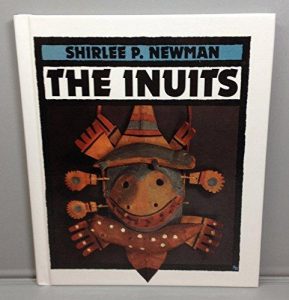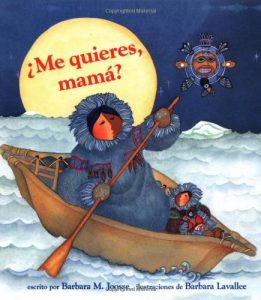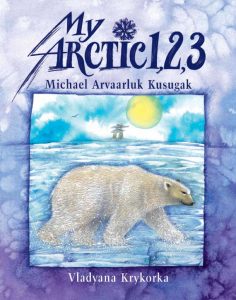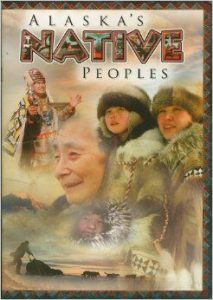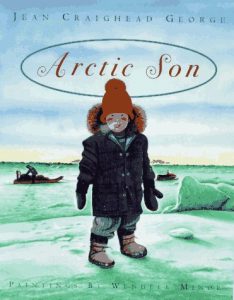 A baby boy is given an Inupiat name to go with his English one and grows up learning the traditional ways of the Eskimo people living in the Arctic.
A baby boy is given an Inupiat name to go with his English one and grows up learning the traditional ways of the Eskimo people living in the Arctic.
Arctic
The Inuits (First Books)
Me Quieres, Mama?
My Arctic 1, 2, 3
Alaska’s Native Peoples
The Last Polar Bear (Laura Geringer Books)
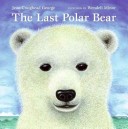
Tigluk and his grandmother paddle out into the Arctic Ocean where they find a young polar bear whose mother has died because of the changes brought about by the warming climate, and they bring the cub back to their town so they can teach it how to survive in a changing world.
Nutik and Amaroq Play Ball

Amaroq is a lively Eskimo boy who fives at the top of the world with his best friend, Nutik, the wolf pup. Amaroq was named after a great wolf leader; Nutik is the wolf leader’s grandpup. The boy and the wolf pup are like brothers.One day Amaroq and Nutik want to play football, but their ball has disappeared. What shall they do? Listening to and observing Nutik’s wolf talk, Amaroq follows him outside. The two friends wander out onto the tundra, where there are no trees, no paths, and no landmarks to help them find their way home again. Amaroq is afraid they are lost, but then he remembers what the great wolf leader he was named after would do. By observing nature and following what it says, Amaroq and Nutik are safe again-but not before finding a surprise for both of them!Amaroq and Nutik’s adventure follows the first picture book about them, Nutik, the Wolf Pup, and continues the Arctic saga about these characters originally drawn from Julie’s Wolf Pack, sequel to the Newbery Medal-winning Julie of the Wolves.
Whale Snow

Amiqquq is excited when his family catches a bowhead whale. As his family prepares to celebrate the traditional Inupiaq whaling feast, Amiqqaq learns about the spirit-of-the-whale.
The Girl Who Dreamed Only Geese: And Other Tales Of The Far North
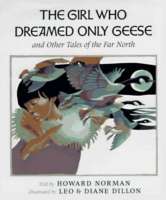
Based on decades of research and extended collaboration with Inuit storytellers, award-winning author Howard Norman’s masterful retellings of ten Inuit tales invite readers on a unique story–journey from Siberia and Alaska to the Canadian Arctic and Greenland. Dramatic illustrations inspired by stonecut art of the Inuit people capture the beauty and mystery of these stories as they carry us–sometimes laughing, sometimes crying–from village to village over taiga, tundra, snow plains, and the iceberg-filled sea.
Northern Lights: The Soccer Trails
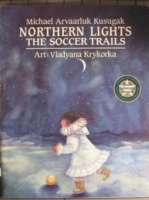
Northern Lights is a beautiful tale that explores the mystical aspects of the northern lights in Inuit culture. Scientists have their own explanations for the phenomenon that occurs when the night sky shimmers with milky white patterns, or displays all the colors of the rainbow. But the Inuit prefer their own explanation: They believe the souls of the dead are engaging in a lively game of soccer, just as they did when they were living. They run all over the sky chasing a walrus head that they use for a soccer ball. This is the story of Kataujaq and the intimate relationship she has with her mother. They do almost everything together; they hug, rub noses and say “Mamaq” which means “You smell so nice.” But a great sickness comes and Kataujaq’s mother is taken south to the white people’s hospital and never comes back. Kataujaq grieves, but is also able to rejoice when she and her grandmother watch the northern lights. This book celebrates family life, intimacy and the glory of nature.

